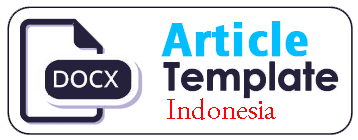Analysis of physical SAF policy planning and implementation for small and medium industries in Maluku Utara Province
DOI:
https://doi.org/10.54849/monas.v5i1.128Keywords:
SAF, major project, SMI, North MalukuAbstract
Development related to Small and Medium Industries (SMI) in the regions funded by SAF is an interesting thing to analyze since the planning aspect is the basis for recommendations for improvement from this side in the future. In more depth, the evaluation of planning synchronization needs to see how far the Physical SAF supports priority programs in the regions in a desk analysis of the central-regional planning gap. The purpose of writing an analysis related to the Physical SAF in the SMI sector is to identify the relevance of the Physical SAF menu for regional development and identify a portrait of the integration of this fund with Major Projects and various problems at the site level in North Maluku. The analysis method uses a literature review approach and limited discussions with the local government. Based on this, it recommends: 1) the need for participatory SAF planning that is bottom-up, down to the community level; 2) the need for regional regulations to deal with obstacles to the implementation of the Physical SAF in the SMI field, especially during the COVID-19 pandemic;3) encouraging the acceleration of stipulation of Technical Guidelines for the SAF implementation as a primary reference for mapping the menu of SAF activities to be included in Regional Government Information System and accelerating the implementation of SAF activities by Regional Governments; and 4) strengthening the role of Bappeda as well as being involved in determining Priority Locations (coordination of Ministries/Agencies - Regional Apparatus Organizations and Bappeda).
Downloads
Published
Issue
Section
License
Authors who publish in this journal agree to the following terms:
- Authors retain copyright and grant the journal right of first publication with the work simultaneously licensed under a Creative Commons Attribution-NonCommercial-ShareAlike 4.0 International License that allows others to share the work with an acknowledgement of the work's authorship and initial publication in this journal.
- The journal allows the authors to hold the copyright without restrictions and to retain publishing rights without restrictions.
- Authors can enter into separate, additional contractual arrangements for the non-exclusive distribution of the journal's published version of the work (e.g., post it to an institutional repository or publish it in a book), with an acknowledgement of its initial publication in this journal.







